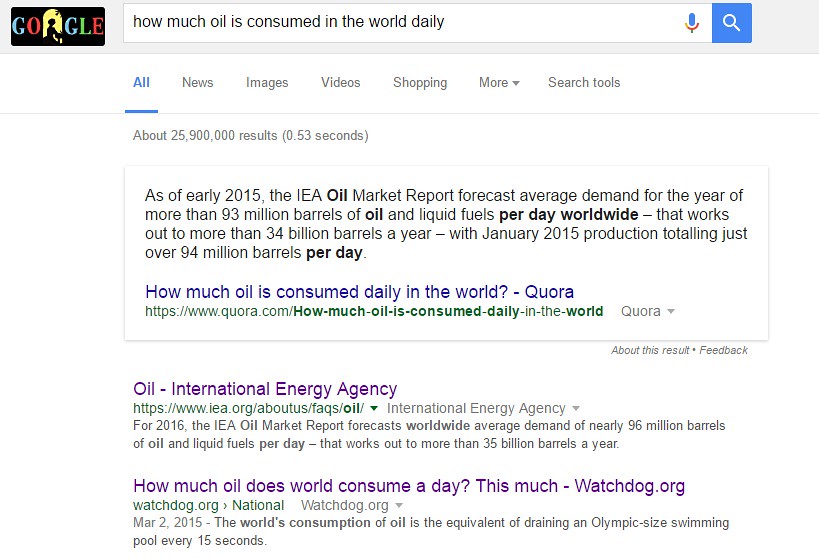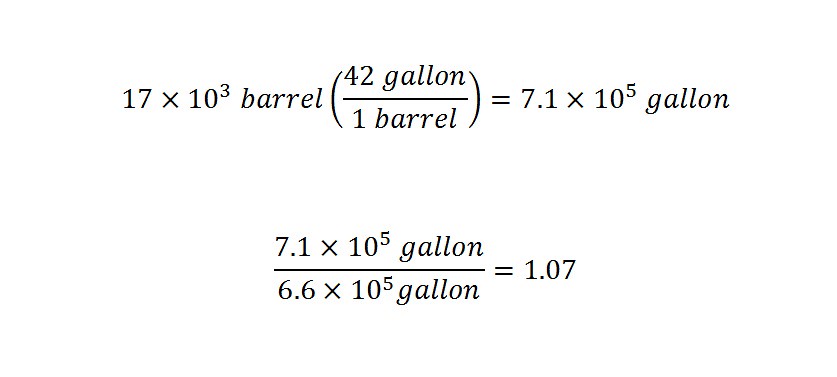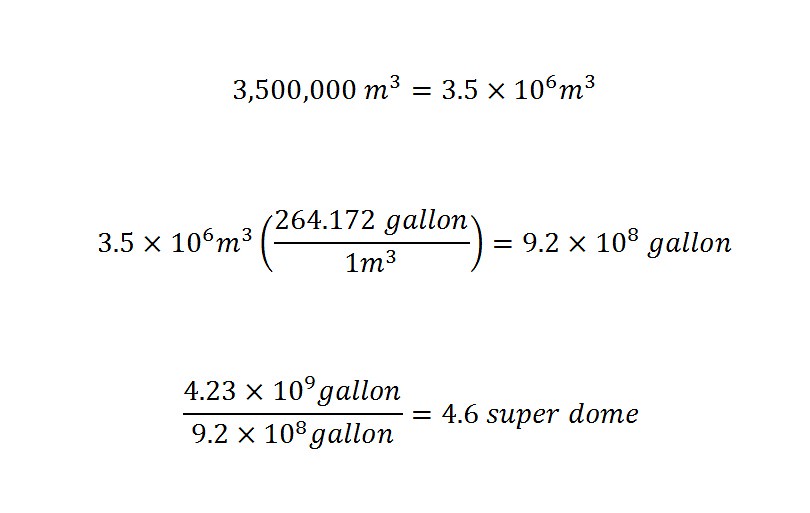The take home point is that the issue of climate change is starting to permeate through various circles (board rooms) of various large corporations. One such corporation is Exxon Mobil Corportation. Recently, there have been questions generated at the top of the corporate structure about the direction of the future. Where do we stand? The global oil demand is 94 million barrels (by one estimate) every single day. WOW! How do we visualize that large of volume? Below are a couple of ways that might be helpful.
Investors Push Board Of Exxon For Answers!
In a recent artile from the New York Times titled "Exxon Investors Seek Assurance As Climate Shifts, Along With Attitudes," the authors discuss the new emerging trend of investors starting to inquire into mitigating risks associated with climate change. Here is the new revelation of investors which is indicative of a changing energy landscape:
At the company’s planned annual meeting on Wednesday in Dallas, shareholders will vote on a resolution to prod Exxon Mobil to disclose the risks of climate change to its business.Such resolutions have been floated before, and they typically do not pass. But there is a growing chorus of investors, many of them large institutional shareholders, who say they are worried that Exxon Mobil, the largest publicly traded energy company in the world, is not adequately preparing for tighter times if countries start acting on the pledges they made last December as part of the Paris climate change accord.Exxon Mobil, for example, projects that global demand for oil will keep growing — by just over 13 percent from today, to 109 million barrels of oil a day by 2040.But the International Energy Agency’s projections include one situation where demand could drop by 22 percent, to 74 million barrels a day by 2040, if measures are put in place to keep global warming at levels that, while still dangerous, could avoid the most devastating consequences.The shareholder resolution calls for Exxon Mobil to publish an annual assessment of impacts of various climate change policies, including ones that would lead to the steep drops foreseen in the most severe energy agency’s forecast. Another resolution calls for the company to give shareholders a bigger say over governance.
The excerpt above highlights the major issues that society faces in today's fast-paced changing world. I think that the authors did a great job of summing the issue up. The impact of the Paris Climate Talks is gaining momentum by the fact that the subject is making news. I was amazed to see that the results of the climate talks last December is actually causing a downstream change which is exerting pressure back up the chain.
To have other corporations start to divest stock in companies that are geared toward future renewable energy technology is a main stay in the current popular media. Further, to have a story about consumers starting to question the practices of these large corporations occupies the same space as a change in technology. But to have the investors of a large corporation like Exxon Mobil start to ask questions of the Board is a whole new parameter change in the equation toward moving to renewable energy technology.
The investors are serious players in a company -- for if the investor (who holds a large amount of shares) gets scared, then he/she can dump their stock and cause problems for the corporations. Here is a question in the form of an excerpt that sums up the issue from the article shown below:
But big owners of the stock worry that the optimism of Exxon Mobil’s outlook for oil demand is dangerously misguided.
“Investors can’t afford to have Exxon become the next Kodak,” said Scott M. Stringer, the comptroller of New York City, whose pension fund owns roughly $1 billion worth of Exxon Mobil stock.
“It is impossible for them to do business for the next 100 years as they have the last 100 years,” added Mr. Stringer, who supports the risk-disclosure resolution
This is a wake-up call for these large corporations. But, what really caught my eye were the numbers representing the increase or decrease in daily global demand in oil. Upon first pass (reading), I was trying to figure out what the exact daily global demand is -- really a ball park figure? I am sure that the process of trying to get the numbers to estimate the total number of barrels in oil on a daily basis is complicated. I decided to type into google a question -- shown below:
As you can see, the first boxed statement indicates that the daily global demand is around 94 million barrels a day. Oh my goodness. WOW. If you look down the list, there are two other sources that I inlcuded in the picture. I read both to make sure that the first figure was on par with the range that was mentioned in the New York Times article above.
Another statement that caught my attention was on the website "Watchdog.org" listed as the 3rd entry above. Here is an interesting and eye-catching statement guiding the reader to put the huge global daily demand of oil into perspective. The author uses dimensional analysis with no equations but with dimensions that have been used on this blog site before -- the Olympic Size Swimming Pool. Here is the excerpt:
“It’s mind-boggling,” Peter Tertzakian, the chief economist and managing director of Canada’s ARC Financial Corporation told participants at the Platts North American Crude Oil Summit last Thursday.To put that number in perspective, Tertzakian offered this nugget: “That’s the equivalent of draining an Olympic-size swimming pool every 15 seconds.”“You can say, pardon the pun, the world goes ’round on oil,” Tertzakian told Watchdog.org.
Previously on this blog site, I have used the Olympic Size Swimming Pool to put a large volume of water into perspective. You will recall here on the introductory post! In that post, the calculation involved determining the amount of Olympic Sized Pools that would be filled with 20 million gallons of oil -- which was spilled in the Exxon Valdez Oil Spill in 1987. Kind of ironic with the subject matter in the current post -- right? The calculation revealed the spill would fill 30 Olympic Swimming Pools. I thought that volume was large. Keep on reading.
How Many Olympic Size Pools Could Be Filled?
In the article, the author included a picture of an Olympic Size Swimming Pool to drive home the result of dimensional analysis. Here is a picture of an Olympic Swimming Pool from "Wikipedia":
Source: Wikipedia
Without further ado, the volume has been stated in the excerpt above of 94 million barrels of oil per day -- represents the daily demand for the world. Further, in the article from "Watchdog.org" the statement says that the volume corresponds to an Olympic Size Swimming Pool being filled every 15 seconds. Is that correct? How does a person check this fact out through dimensional analysis?
First, the amount of water that occupies the typical Olympic Size Swimming Pool needs to be known. Taken from "Wikipedia" the amount if 660,000 gallons. Additionally, the conversion of barrels to gallons needs to be known too. First, I calculate the amount of barrels in 15 seconds as shown below:
The amount of barrels delivered in 15 seconds is 17,000-barrels. How many gallons are in a barrel of oil? The news typically reports volumes of oil in barrels rather than gallons or liters. Shown below is the image of typing the question of conversion units from google:
The image above is helpful or should be to the reader. Not all conversion factors have to be taken from a reference book or a text book. To lower the barrier toward carrying out the calculation, just ask google. With the conversion, the amount of gallons in 15 seconds can be determined as shown below:
There are 710,000-gallons in 17,000-barrels of oil. Additionally, I took the liberty to complete the calculation of comparing the amount of barrels to the volume of an Olympic Sized Swimming Pool. Basically, the statistic cited in the "Watchdog.org" article was correct. Nice, I like when the media do their calculations correctly.
Is there any other dimension or volume that could be chosen to further put the volume in perspective?
How about the world's largest swimming pool?
Located in Chile, the world's largest swimming pool is 66,000,000-gallons. WOW. Here is a photo taken from the "Wikipedia" site:
Source: Wikipedia
I wondered how many of these would be filled up by the total daily volume for the global demand -- 94 million barrels. Here is the calculation below:
64 pools -- how is that possible to put into perspective? My mind was bent. I like large numbers and see them a lot in science, but this number is incomprehensible. As usual, I like to look for a variety of volumes to compare the numbers.
How about the Mercedez Benz Super Dome?
How Many Super Domes?
In order to figure this out, I needed the volume of the interior space of the Mercedez Benz Super Dome in Louisiana. The volume is 3,500,000 cubic meters -- interior space.
Source: Wikipedia
How does a person calculate the volume and compare the result to 94 million barrels?
To start with, the proper conversions need to be carried out; Specifically,
The next time that you (the reader) are inside the Super Dome think about the fact that 4.5 of these could hold the daily global demand of oil. Absolutely amazing to say the least.
Have I given you a good perspective of the global daily demand of oil -- 94 million barrels of oil?
Conclusion ...
The next time that you find yourself at the gas pump think about the complexity associated with computing the daily demand of oil globally. Undertaking this task would require compiling a bunch of statistics from a variety of organizations. More importantly, I would ask the reader to consider the opposition on behalf of those civilian's who would like to transition immediately toward renewable energy. Can the world accomplish this task quickly? What if all of the major corporations decided to make a transition -- how long would that take? Probably longer than you could imagine.
Yes, I am speculating on this. Although, upon viewing the perspective given above through dimensional analysis, what is an appropriate time line? How do we accomplish this? These are open ended questions which need to be entertained. You might be wondering at this point:
What can I do to reduce my consumption of oil and contrabution to the global daily demand?
Imagine if each of us cut our usage by just a little. That would add up to a large number. Lets all do our part and move toward using/demanding renewable energy technology.
Related Blog Posts:
Dimensional Analysis Of Statistics And Large Numbers - Index Of Blog Posts
Science Topics, Thoughts, and Parameters Regarding Science, Politics, And The Environment!










No comments:
Post a Comment